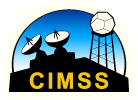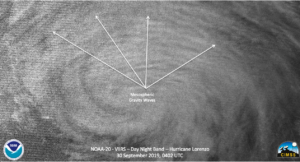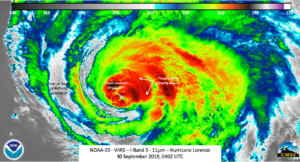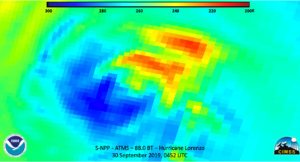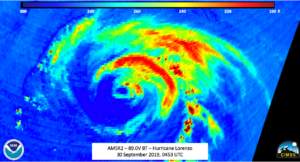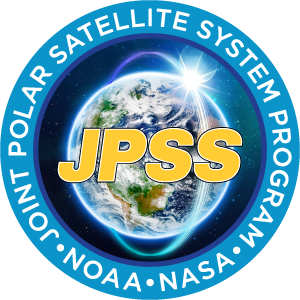« Back to "Hurricane Lorenzo - September 27-30"
Hurricane Lorenzo from morning of 30 September 2019
Posted: September 30, 2019
There haven’t been a lot of changes with Lorenzo this evening, with a small cloud-filled eye remaining visible and an enormous cloud shield expanding in the northern semicircle. Satellite intensity estimates support a somewhat lower intensity than the previous advisory, so the initial wind speed is set to 95 kt. It should be emphasized that even though the peak winds are down since yesterday, the area of the hurricane-force winds has more than doubled during that time….
The satellite presentation of Lorenzo has generally changed little during the last several hours. The hurricane continues to maintain a well-defined inner core with a ragged cloud-filled eye. The outer bands are well established to the north and east of the center, but are restricted on the south side of the circulation due to some southwesterly shear and drier air being wrapped into that portion of the cyclone. The initial intensity estimate is set at 90kt based on T5.0/90 kt Dvorak classifications from TAFB and SAB.
